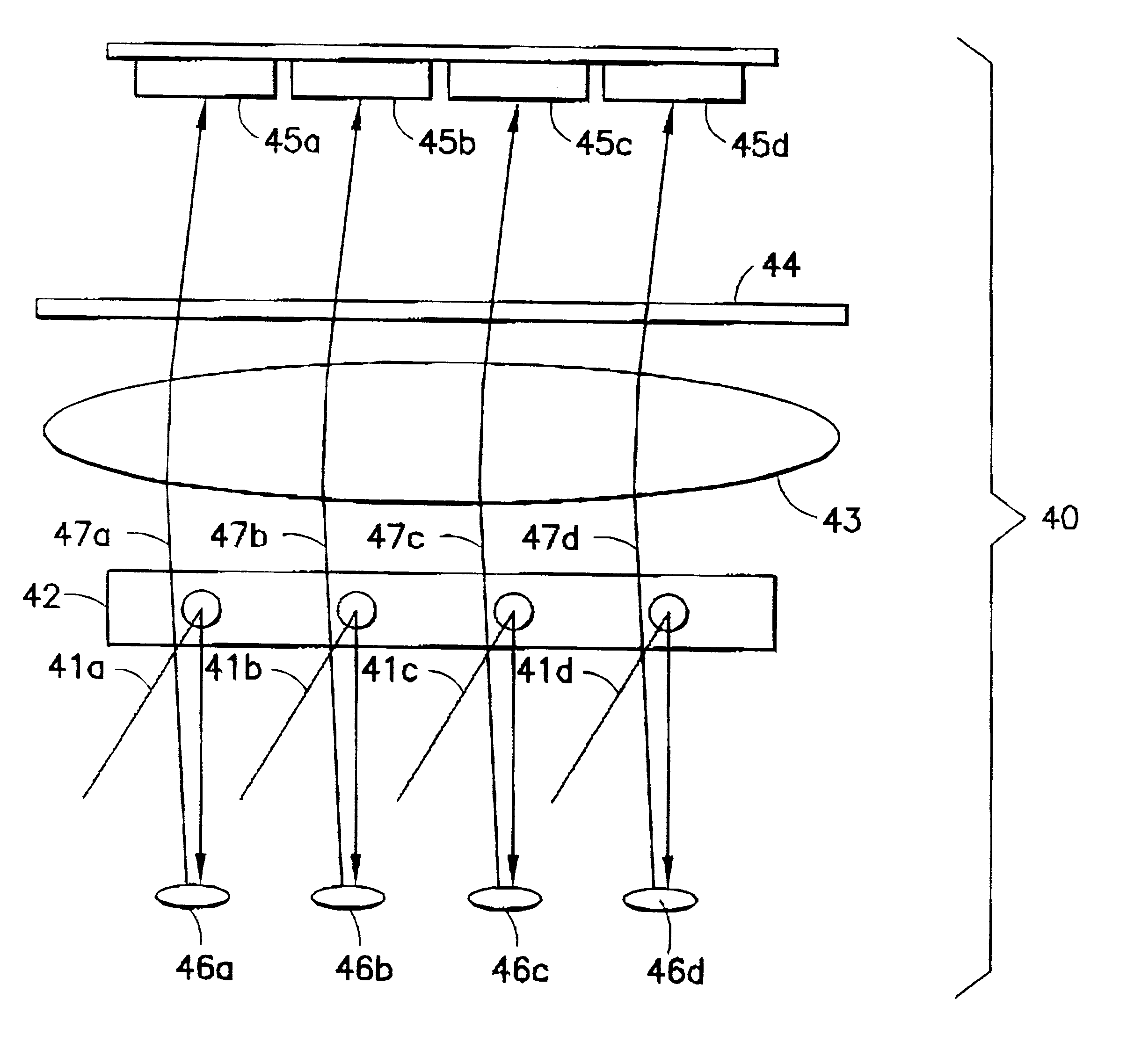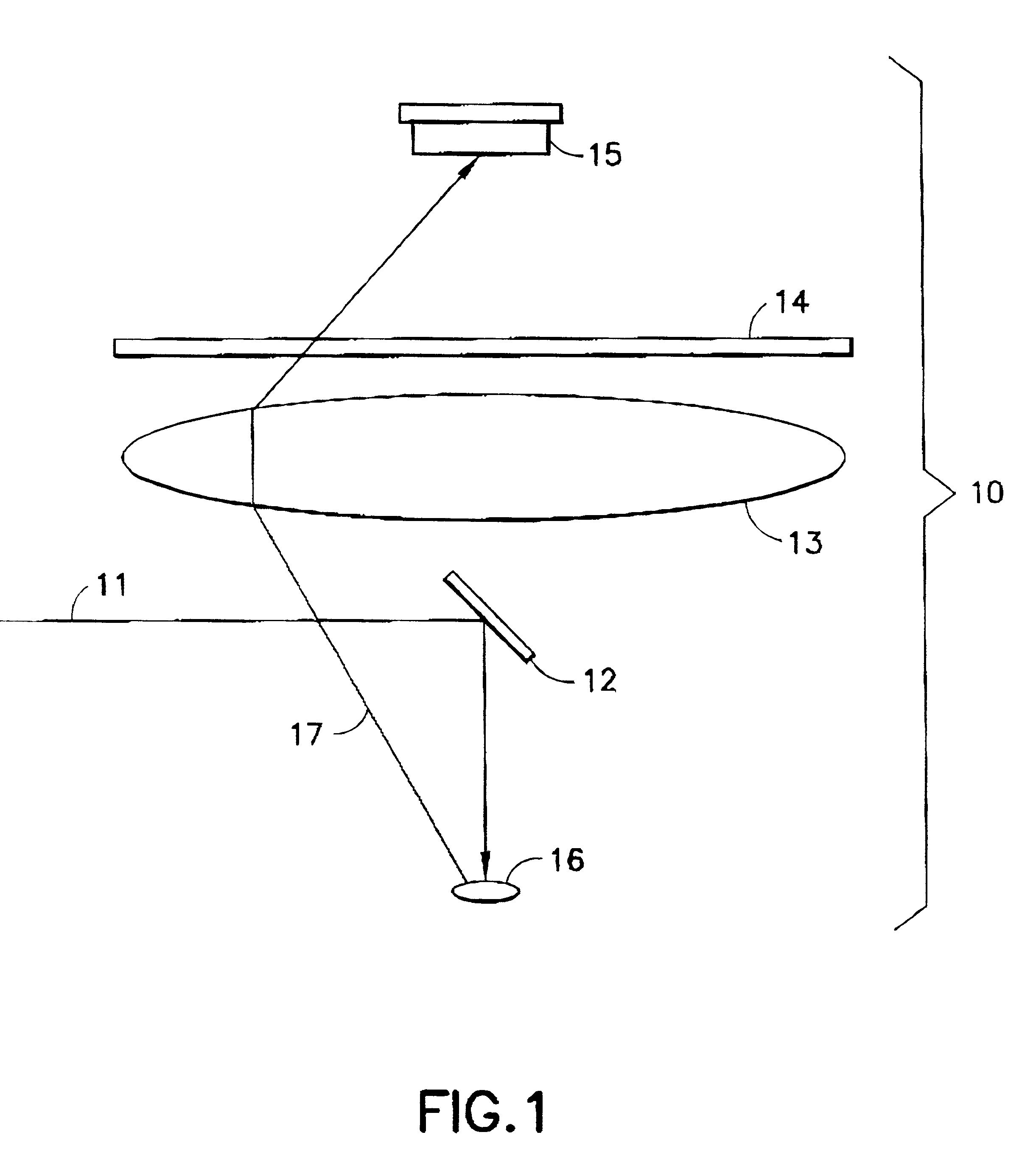Fluorescence polarization assay system and method
a fluorescence polarization and assay technology, applied in the field of fluorescence polarization assay system and method, can solve the problems of degrading accuracy, increasing the readout time and instrument cost, and increasing the cost or complexity of the element without great consequen
- Summary
- Abstract
- Description
- Claims
- Application Information
AI Technical Summary
Problems solved by technology
Method used
Image
Examples
Embodiment Construction
In this detailed description of the present inventive fluorescence instrument certain terms are synonymous in meaning and interchangeably used. The term waveplate and retarder are both used to denote an optical retarder element having a selected optical retardance. Wavelength band and wavelength range are both used to denote a contiguous range of wavelengths, which typically spans a few nanometers or more, but may be monochromatic in some cases such as when discussing laser light or spectral line emission from lamps. Fluorescence instrument, instrument, fluorescence reader, and plate reader all refer to an instrument for quantifying the amount, polarization, or time-evolution of fluorescent light from a sample.
FIG. 1 depicts a fluorescence reader 10 in accordance with the present invention. Light rays 11 reflect from a mirror 12 and are directed onto a sample 16. Ideally, the light rays form a relatively compact bundle, so the mirror is small and blocks a negligible portion of the a...
PUM
| Property | Measurement | Unit |
|---|---|---|
| emission wavelength | aaaaa | aaaaa |
| wavelength | aaaaa | aaaaa |
| wavelengths | aaaaa | aaaaa |
Abstract
Description
Claims
Application Information
 Login to View More
Login to View More - R&D
- Intellectual Property
- Life Sciences
- Materials
- Tech Scout
- Unparalleled Data Quality
- Higher Quality Content
- 60% Fewer Hallucinations
Browse by: Latest US Patents, China's latest patents, Technical Efficacy Thesaurus, Application Domain, Technology Topic, Popular Technical Reports.
© 2025 PatSnap. All rights reserved.Legal|Privacy policy|Modern Slavery Act Transparency Statement|Sitemap|About US| Contact US: help@patsnap.com



